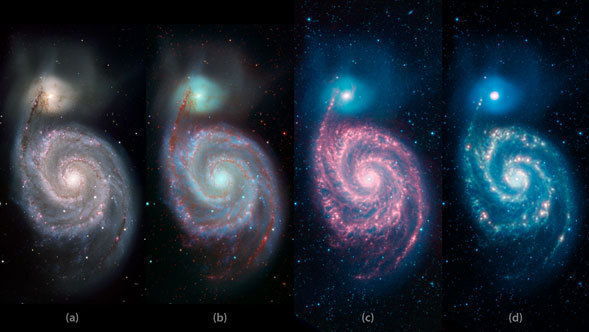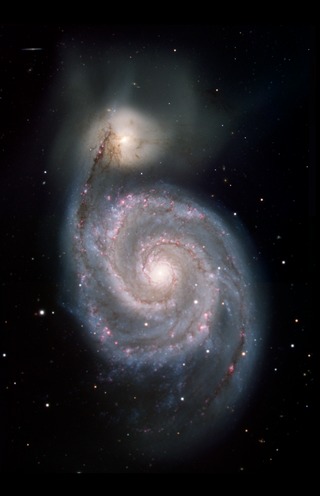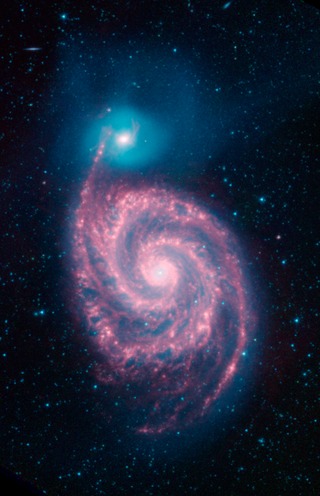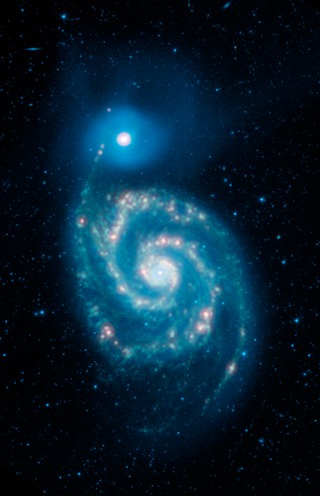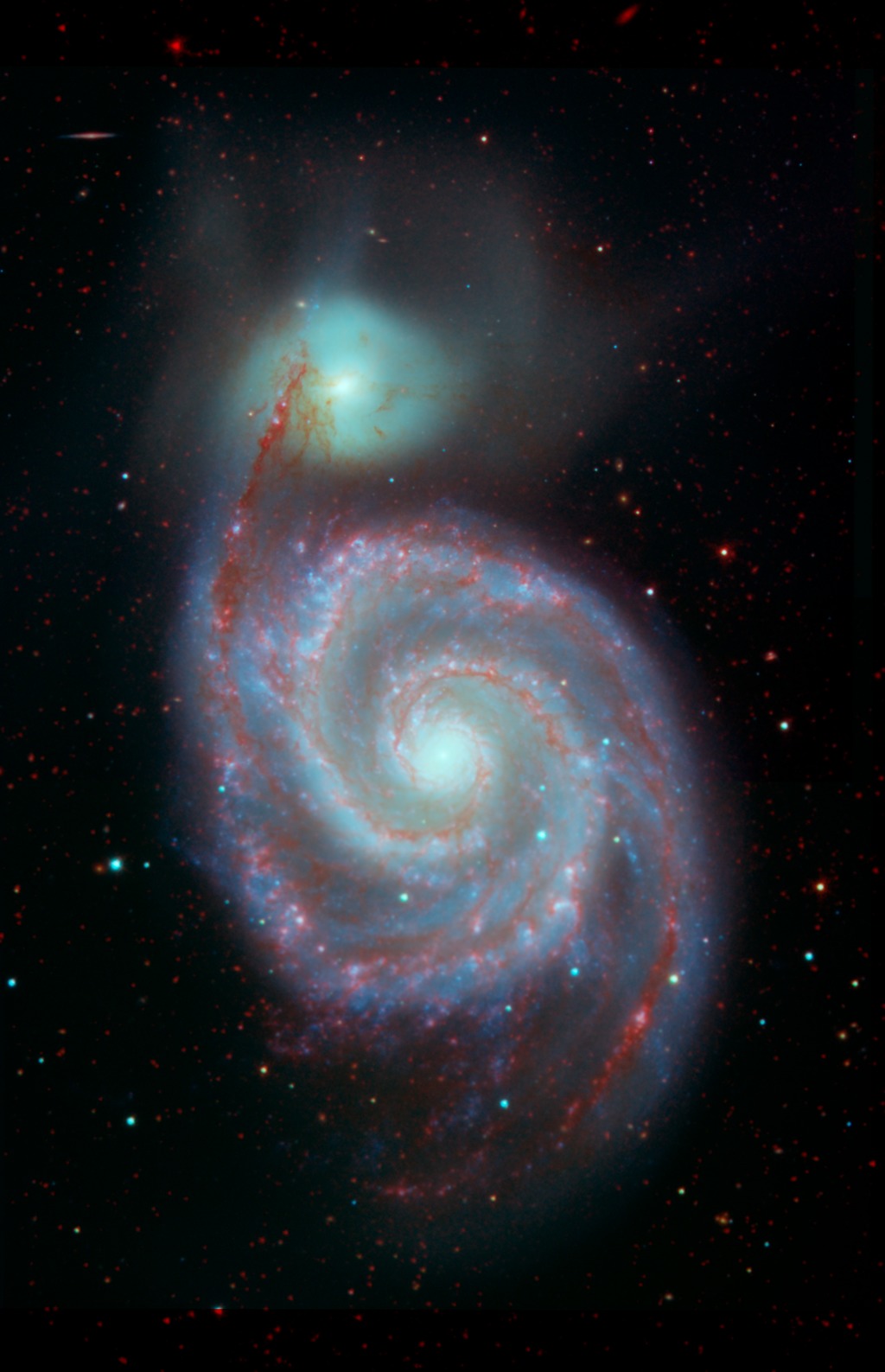
Credit: NASA/JPL-Caltech
Observation • June 26th, 2019 • ssc2019-11b
ssc2019-11b
This image shows the Whirlpool galaxy, also known as Messier 51 and NGC 5194/5195, which is actually a pair of galaxies. Located approximately 23 million light-years away, it resides in the constellation Canes Venatici.
This image combines two visible light wavelengths (in blue and green) and infrared light (in red). The infrared was captured by NASA's Spitzer Space Telescope, and emphasizes how the dark dust veins that block our view in visible light begin to light up at these longer, infrared wavelengths.
All of the data shown here were released as part of the Spitzer Infrared Nearby Galaxies Survey (SINGS) project, captured during Spitzers cryogenic and warm missions.
The Jet Propulsion Laboratory in Pasadena, California, manages the Spitzer Space Telescope mission for NASA's Science Mission Directorate in Washington. Science operations are conducted at the Spitzer Science Center at Caltech in Pasadena. Space operations are based at Lockheed Martin Space Systems in Littleton, Colorado. Data are archived at the Infrared Science Archive housed at IPAC at Caltech. Caltech manages JPL for NASA.
About the Object
- Name
- Whirlpool Galaxy • Messier 51 • M51 • NGC 5194 • NGC 5195
- Type
- Galaxy > Type > Spiral
- Galaxy > Type > Interacting
- Galaxy > Grouping > Pair
- Distance
- 23,000,000 Light Years
- Redshift
- 0.002
Color Mapping
| Band | Wavelength | Telescope |
| Optical | 440 nm | KPNO-2.1m |
| Optical | 550 nm | KPNO-2.1m |
| Optical | 650 nm | KPNO-2.1m |
| Infrared | 3.6 µm | Spitzer IRAC |
| Infrared | 4.5 µm | Spitzer IRAC |
| Infrared | 8.0 µm | Spitzer IRAC |
Astrometrics
- Position (J2000)
- RA =13h 29m 53.0s
- Dec = 47° 12' 32.1"
- Field of View
- 10.2 x 15.9 arcminutes
- Orientation
- North is 0.4° right of vertical
